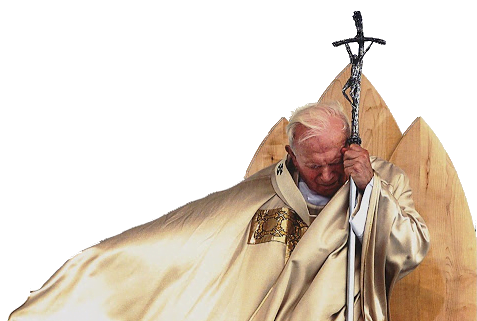
In these three final readings from the first letter to the Corinthians, we begin today the 15th chapter, which discusses resurrection from the dead and its relationship to the resurrection of Christ as a core belief of our Christian faith. In today’s reading (1 Corinthians 15:1–11), Paul introduces the subject by reminding the Corinthians of the Gospel tradition that had been given to them and their need to be faithful to it.
The Gospel will be an instrument of their salvation only if they hold closely to what they had been taught by Paul, the one who first brought the Christian faith to them. To believe anything else would be to go down a road that leads to oblivion; it would mean they were believing “in vain”. Their fidelity should be manifested in the way they lead their lives and, as we have seen, the behavior of some of them had left much to be desired.
Paul then summarizes the core of Christian teaching that he taught them. He emphasizes that what he taught them was exactly the tradition that he himself had received and nothing else. He was not its originator, nor did he receive it directly from the Lord. His source was the other Christians:
- Christ died for our sins in accordance with the Scripture (see the disciples’ experience on the road to Emmaus, Luke 24:13-35);
- He was buried (proof that he had really died);
- He was raised on the third day, also in accordance with the Scripture.
He lists six times when the Risen Christ was seen by people—too many people for deception to be involved:
- First to be mentioned is Cephas or Peter, an appearance mentioned by Luke (Luke 24:34) as happening on Easter Sunday itself.
- Then there is an appearance to the “Twelve” recorded by Luke (Luke 24:36-53) and John (John 20:19-29) in their Gospels. They are still called the “Twelve” even though Judas is no longer with them; however, Judas would be replaced by Matthias (Acts 1:15-26).
- Paul next mentions a simultaneous appearance to more than 500 disciples, most of whom were still alive as he writes and so can witness to the truth of what he is saying. We are not sure when this apparition took place, although it could possibly be that mentioned by Matthew just before his description of the Ascension (Matthew 28:10,16-20). The appearance to this large group may be mentioned to help bolster the faith of those Corinthians who evidently had some doubts about the resurrection of Christ (see 1 Corinthians 15:12-24).
- Then he appeared to James. As this James is listed in addition to “all the apostles”, it would seem to exclude James, the son of Zebedee, or James, son of Alphaeus, and indicate James, a “brother” of Jesus mentioned by Matthew (Matthew 13:55). This James, like the other “brothers” of Jesus, does not seem to have believed in Jesus before the resurrection (John 7:5), but afterwards is numbered among those disciples in the Upper Room after the resurrection (Acts 1:14). He later became the leader of the church in Jerusalem (Acts 15:13). There is no mention of this appearance in the four Synoptic Gospels.
- The appearance to “all the apostles” could be that mentioned at the beginning of Acts and before the Ascension and includes more than the Twelve already mentioned.
- Last of all, the Risen Jesus appeared to Paul. The event is recorded no less than three times in Acts when Paul (then Saul) was on his way to arrest the Christians in Damascus. Paul describes this experience, maybe three years after the resurrection, in terms of an abnormal and totally unexpected birth.
Paul was not part of the original group of Apostles. He had not lived with Christ as the others had. His entry into the apostolic office was not ‘normal’. Furthermore, at his conversion he was abruptly snatched from his former way of life (Acts 9:3-6). He makes no distinction between the sort of apparition that took place on the Damascus road and the sort of apparitions of Jesus that took place between the resurrection and the ascension.
He is almost embarrassed to carry the title of ‘apostle’. After all, he had at one time used all his efforts to wipe the disciples of Christ from the face of the earth. In doing so he was persecuting Christ himself (Acts 9:5). Paul says: “I am the least of the apostles, unfit to be called an apostle… But by the grace of God, I am what I am…”
The outcome is that Paul can say, without any boasting or exaggeration, that, with God’s grace working through him, he has worked harder than any other evangelizer. The record of his achievements in the Acts of the Apostles, as well as in his Letters, gives ample testimony to that claim. Despite that, he again emphasizes that what he preaches is totally in harmony with what he had received from his own teachers (the other Apostles), and that is also what the Corinthians should believe. Paul thus puts the resurrection of Jesus as the central fact on which our whole faith in Jesus is based. Without that, all the rest falls apart. This he will show in tomorrow’s reading.
Let us today renew our faith in the resurrection of Jesus. He who died on the cross is now our living Lord who, through his Spirit, is present in every baptized member of our communities and remains a powerful factor in our lives.
May God Bless You and Grant You His Peace!

